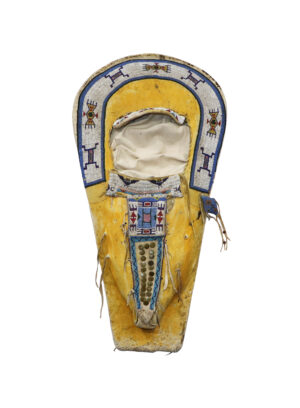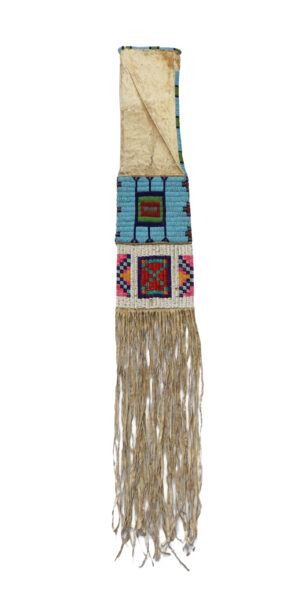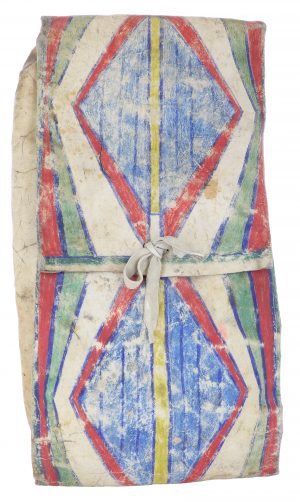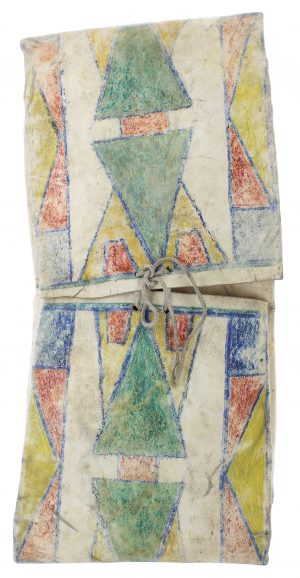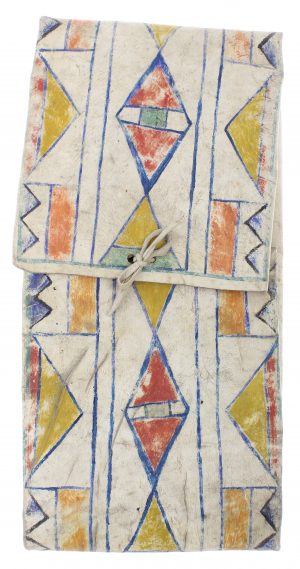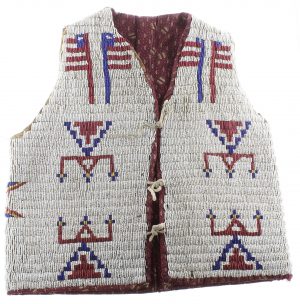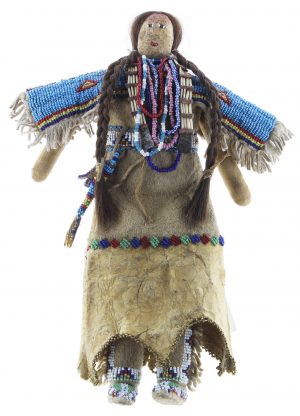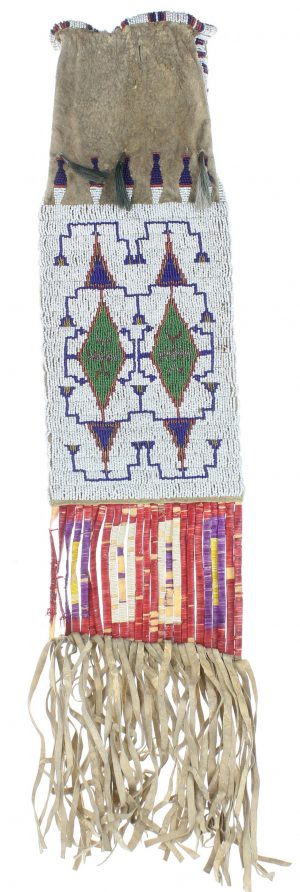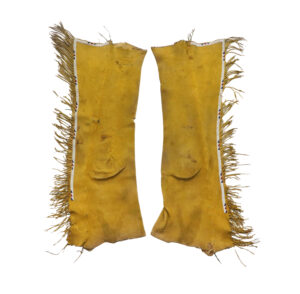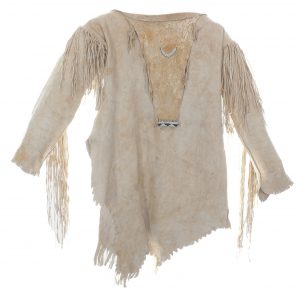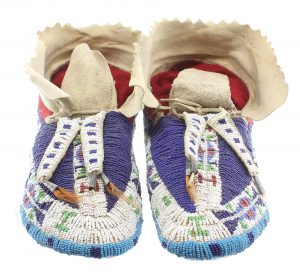Native American Beadwork & Hides
Looking for authentic Native American beadwork? From beads on moccasins, to dolls, to bags, you’ll find many genuine beadwork pieces from various local artists in Arizona. Antique Native American beadwork may be found in all Native American culture, but never had it evolved as an art form in such a way as it did in the Plains of Native America.
On our website, you’ll find beautiful, genuine beadwork designs from Sioux, Plains, Lakota, and Nez Perce artists. Questions? Please contact our team today, or shop our Native American beadwork below.
Filters
Color
Color (Basic)
Flavor
Length
Ring Size
Size
Holster Side
Rug Size
Shop For
Stone
Tribe
Artist
Price
-
Ute Cradleboard$5,500.00
-
Crow Pipebag$3,850.00
-
Sioux Beaded Moccasins$1,400.00
-
Plains Parfleche Envelope$2,950.00
-
Plains Parfleche Envelope$3,200.00
-
Parfleche Bag$3,500.00
-
Sioux Beaded Vest$2,750.00
-
Lakota Beaded Doll$6,250.00
-
Sioux Beaded Quill Pipe Bag$2,200.00
-
Southern Plains Antelope Hide Leggings$5,500.00
-
Comanche Child’s Shirt$8,500.00
-
Sioux Ceremonial Moccasins$3,300.00
The History of Native American Beadwork & Hides
Native Americans made their own beads from native materials for centuries, but the painstaking process made beads scarce and hard to come by. With the introduction of trade sources through the French via Canada came a surplus of glass beads that soon came to ornament nearly every functional item of the Plains culture literally from head to toe. Early designs in Plains beadwork were usually simple stripes and geometrics, the colors and designs of which were prescribed by ceremonial stricture. Later, especially after the 1870s, the designs began to change and become more complex and elaborate, although the old ceremonial designs were still created.
The artistry and excellence in Native American beadwork was considered a matter of pride for the individual artist. Women made all the clothing and beadwork for their families with the exception of weaponry and the accouterments of war, which were the men’s domain. Although few items remain, those that do exemplify this pride and care in beauty, artistry, and workmanship.
Sewn with sinew thread on hand-tanned hides, elaborate and colorful designs began to evolve, the style and symbolism of which became an important means of tribal identity and inter-tribal trade. The organic nature of the hides and the utilitarian use to which they were put means few samples prior to the 1930’s survive making those pieces still existing rare indeed.
Native American Beadwork FAQs
How do you identify native beadwork?
Authentic Native American beadwork is distinguished by its craftsmanship, materials, and designs that are deeply rooted in the traditions of specific Native American tribes. Look for the use of traditional techniques such as peyote stitch, brick stitch, or two-needle applique, which have been passed down through generations. The materials used also speak volumes; genuine beadwork often incorporates natural materials like bone, shell, and wooden beads, alongside glass beads that became popular post-European contact.
Additionally, the patterns and motifs within the beadwork are not merely decorative but carry cultural narratives and symbolisms specific to each tribe. Recognizing these elements requires some knowledge of the diverse cultures and history of Native American peoples, as well as an understanding of the regional differences in beadwork styles.
What do you need for Native American beading?
For Native American beading, you will need a variety of tools and materials that are essential for creating intricate and meaningful beadwork. The most fundamental among these are the beads themselves, which come in various sizes, colors, and materials, including glass, metal, wood, and bone. Size 11/0 seed beads are commonly used for their versatility. You’ll also need beading needles, which are finer and more flexible than regular sewing needles, and beading thread that is strong and durable.
A bead mat or cloth can help prevent beads from rolling away. Depending on the technique, you might also require a loom for woven beadwork. Other helpful tools include scissors, pliers, and glue for finishing touches. Importantly, alongside these physical tools, patience, practice, and a deep respect for the cultural significance of the beadwork you are undertaking are important.
Why is beading important to Native American culture?
Beading holds profound importance in Native American culture as both an art form and a means of expression. It is a deeply rooted tradition that serves as a vessel for storytelling, cultural identity, and spiritual beliefs. Through beadwork, artisans can convey stories, depict historical events, express social status, and celebrate the natural world. Beading also serves as a medium for maintaining and strengthening intergenerational ties, as the skills and techniques are passed down from elders to the younger members of the community, ensuring the continuity of cultural knowledge and practices.
Furthermore, Native American beadwork plays a vital role in ceremonial and everyday attire, symbolizing the wearer’s identity and affiliations. The meticulous art of beading, therefore, is much more than a craft; it is a sacred tradition that embodies the resilience, creativity, and enduring spirit of Native American peoples.
What do the colors of Native American beads mean?
The colors of Native American beads carry significant meanings and symbolisms that vary across different tribes and regions. While there is no universal color symbolism applicable to all Native American cultures, many tribes attribute specific meanings to certain colors, which are often reflective of their relationship with nature, spiritual beliefs, and cultural narratives. For instance, black is frequently associated with the night or the Northern direction, representing power, strength, or the unknown.
White might symbolize purity, light, and the Southern direction. Red often stands for life, blood, and the East, while yellow can represent sunlight, growth, and the West. Blue is commonly linked to the sky and water, signifying calmness and peace. It’s important to understand that these interpretations can vary, and the specific meanings of colors in beadwork are deeply intertwined with the cultural and spiritual contexts of each Native American community.
Native American Beadwork Since 1916!
Each of our Native American beadwork pieces are either antique or contemporary, but each are genuine works of art that are priced accordingly due to being rare, authentic pieces by artists trained with traditional beadwork methods passed down through the generations. If you are looking for authentic Native American art, look no further than Cameron Trading Post. Originally founded in 1916, we specialize in beadwork and hides, dreamcatchers, pottery, rugs, sand paintings, baskets, dolls, fetishes, drums, decor, carvings, and more.
Questions about our beadwork or hides? Please contact Cameron Trading Post today!

